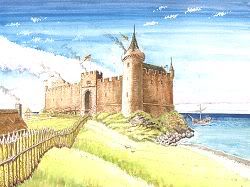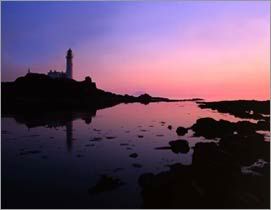Post by Elly on Jun 15, 2005 0:43:04 GMT 10
Ayrshire sits on the Clyde Coast in south-west Scotland.

AYR
The town of Ayr lies at the centre of the county and is some 70 miles distant from Edinburgh and 36 miles from Glasgow. Dumfries is some 60 miles to the south-east, Ardrossan some 19 miles away and Kilmarnock 12 miles to the north. With a streetplan dating back to the 1200s and many fine buildings from the centuries since, Ayr is an attractive town with a real sense of its history. With a streetplan dating back to the 1200s and many fine buildings from the centuries since, Ayr is an attractive town with a real sense of its history.
When you add a river that was first bridged 800 years ago, a harbour that for centuries was the most important on the west coast of Scotland, a racecourse dating back (on an earlier site) to 1770 and all the trappings of a seaside resort, you end up with a town that has something for everyone.
The earliest recorded history of the market town Ayr is during the reign of the Scottish King ‘William the Lion’ (1165-1214). This famous king had a wooden castle built between the mouths of the rivers Ayr and Doon. The settlement that grew beside the castle was granted Royal Charter in 1205, this founding the Royal Burgh of Ayr. By 1263, the town of Ayr had to fight off an invasion by Vikings. Although that invasion was successfully repelled, the English army of Edward 1st (Longshanks) took control of the town in 1296, along with most other parts of Scotland. This was a time when a local of Ayr ‘William Wallace’ (1270-1305) began his rise to fame. Robert the Bruce (1274-1329) born at Turnberry Castle 15 miles south of Ayr used the town for his first parliament to conduct his succession to the Scottish throne. The next famous local of Ayr was John Loudon Macadam born in 1756; he pioneered the building of roads made from layers of different size of broken stone. Three years later, Scotland’s most famous poet Robert Burns (1759-1796) was born in Alloway village to the south of Ayr. Much of present-day Ayr has buildings, statues, pubs and monuments dedicated to Robert Burns and William Wallace.
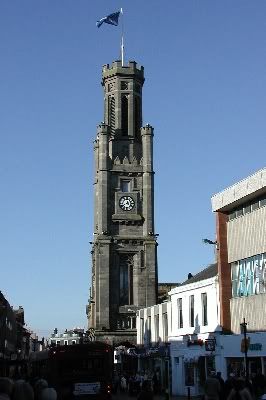
115 feet high Wallace Tower. This tower was built in honour of William Wallace who led the Scottish rebels to an historic victory over the English army at Stirling Bridge in 1297. Wallace was rewarded for his bravery by being given the title ‘Guardian of Scotland’. The tower that was reconstructed to its present form in 1832 may have been built on the site where William Wallace’s father once lived, now the centre of the High Street.
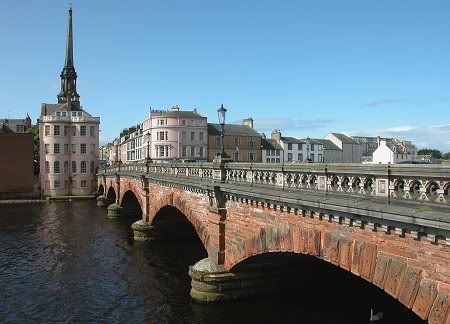
The New Bridge
For a while the River Ayr was probably crossed by a ford. As early as 1250 a timber bridge had been built a short distance upstream of the ford. This was rebuilt in stone in 1470 and remains standing today, open to pedestrians. For many the Auld Brig is one of Ayr's most distinctive features. In 1788 a "New Bridge" was opened on the line of the original ford. This first New Bridge was washed away in flooding in the 1870s and the Auld Brig once more became the main crossing until a replacement New Bridge could be built in 1878.
Ayr's origins were as an L-shaped settlement, with Sandgate marking the western line beyond which the sand dunes threatened to inundate the town, and High Street running inland, parallel to the River Ayr. This pattern persists and today the junction between these two main streets is home to Ayr's most prominent landmark, the spire of the Town Hall, built in the years to 1832.
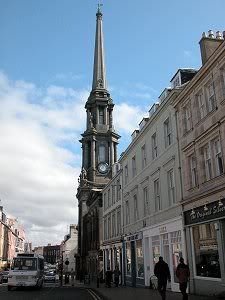
The Sandgate
The old harbour area to the south of the river has recently seen high quality residential development. This makes the most of the river frontage, and also exploits its position at the north end of the long stretch of beach that allowed Ayr to become a highly fashionable resort from the early 1800s. Its popularity was initially based on steamer services, but the real boom came from 1840 when the railway linked Ayr with Glasgow.
Nothing remains of the castle built by William I. After an eventful early life, it was demolished by Cromwell in 1654 to make room for the huge citadel he built here, and from which he governed much of Scotland. Much of the Citadel's outer wall remains in place, with the higher level interior areas used in the 1700s for residential development.
Like the Citadel wall, much else remains on view from Ayr's past. The Auld and (second) New Bridges are very attractive, as are the Town Hall with its remarkable spire and the nearby Wallace Tower, which dates back to 1833.
Close to the river and just west of Sandgate is Loudoun Hall, a magnificent restoration of Scotland's oldest merchant's house, built in 1513. Less well known is St John's Tower, all that remains of a church standing within the Citadel, while nearby is the classical frontage of the County Buildings, the town's courthouse dating from 1822.
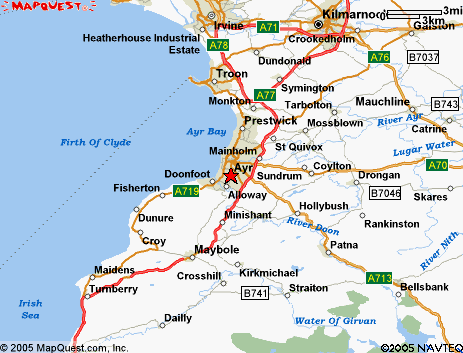

AYR
The town of Ayr lies at the centre of the county and is some 70 miles distant from Edinburgh and 36 miles from Glasgow. Dumfries is some 60 miles to the south-east, Ardrossan some 19 miles away and Kilmarnock 12 miles to the north. With a streetplan dating back to the 1200s and many fine buildings from the centuries since, Ayr is an attractive town with a real sense of its history. With a streetplan dating back to the 1200s and many fine buildings from the centuries since, Ayr is an attractive town with a real sense of its history.
When you add a river that was first bridged 800 years ago, a harbour that for centuries was the most important on the west coast of Scotland, a racecourse dating back (on an earlier site) to 1770 and all the trappings of a seaside resort, you end up with a town that has something for everyone.
The earliest recorded history of the market town Ayr is during the reign of the Scottish King ‘William the Lion’ (1165-1214). This famous king had a wooden castle built between the mouths of the rivers Ayr and Doon. The settlement that grew beside the castle was granted Royal Charter in 1205, this founding the Royal Burgh of Ayr. By 1263, the town of Ayr had to fight off an invasion by Vikings. Although that invasion was successfully repelled, the English army of Edward 1st (Longshanks) took control of the town in 1296, along with most other parts of Scotland. This was a time when a local of Ayr ‘William Wallace’ (1270-1305) began his rise to fame. Robert the Bruce (1274-1329) born at Turnberry Castle 15 miles south of Ayr used the town for his first parliament to conduct his succession to the Scottish throne. The next famous local of Ayr was John Loudon Macadam born in 1756; he pioneered the building of roads made from layers of different size of broken stone. Three years later, Scotland’s most famous poet Robert Burns (1759-1796) was born in Alloway village to the south of Ayr. Much of present-day Ayr has buildings, statues, pubs and monuments dedicated to Robert Burns and William Wallace.

115 feet high Wallace Tower. This tower was built in honour of William Wallace who led the Scottish rebels to an historic victory over the English army at Stirling Bridge in 1297. Wallace was rewarded for his bravery by being given the title ‘Guardian of Scotland’. The tower that was reconstructed to its present form in 1832 may have been built on the site where William Wallace’s father once lived, now the centre of the High Street.

The New Bridge
For a while the River Ayr was probably crossed by a ford. As early as 1250 a timber bridge had been built a short distance upstream of the ford. This was rebuilt in stone in 1470 and remains standing today, open to pedestrians. For many the Auld Brig is one of Ayr's most distinctive features. In 1788 a "New Bridge" was opened on the line of the original ford. This first New Bridge was washed away in flooding in the 1870s and the Auld Brig once more became the main crossing until a replacement New Bridge could be built in 1878.
Ayr's origins were as an L-shaped settlement, with Sandgate marking the western line beyond which the sand dunes threatened to inundate the town, and High Street running inland, parallel to the River Ayr. This pattern persists and today the junction between these two main streets is home to Ayr's most prominent landmark, the spire of the Town Hall, built in the years to 1832.

The Sandgate
The old harbour area to the south of the river has recently seen high quality residential development. This makes the most of the river frontage, and also exploits its position at the north end of the long stretch of beach that allowed Ayr to become a highly fashionable resort from the early 1800s. Its popularity was initially based on steamer services, but the real boom came from 1840 when the railway linked Ayr with Glasgow.
Nothing remains of the castle built by William I. After an eventful early life, it was demolished by Cromwell in 1654 to make room for the huge citadel he built here, and from which he governed much of Scotland. Much of the Citadel's outer wall remains in place, with the higher level interior areas used in the 1700s for residential development.
Like the Citadel wall, much else remains on view from Ayr's past. The Auld and (second) New Bridges are very attractive, as are the Town Hall with its remarkable spire and the nearby Wallace Tower, which dates back to 1833.
Close to the river and just west of Sandgate is Loudoun Hall, a magnificent restoration of Scotland's oldest merchant's house, built in 1513. Less well known is St John's Tower, all that remains of a church standing within the Citadel, while nearby is the classical frontage of the County Buildings, the town's courthouse dating from 1822.



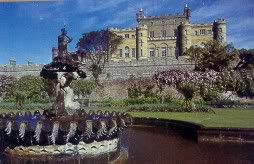




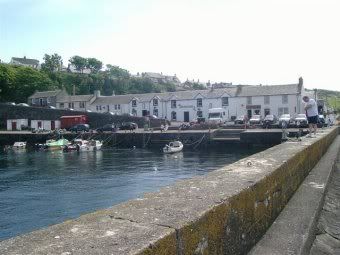
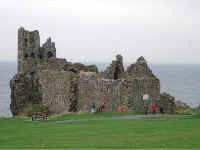
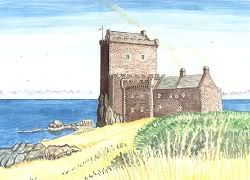



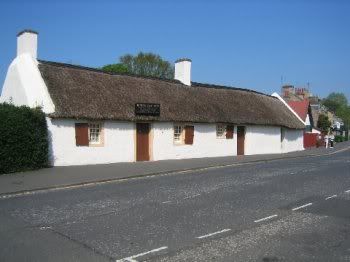
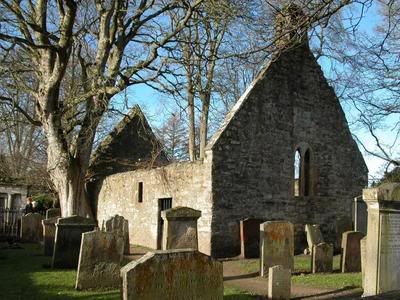
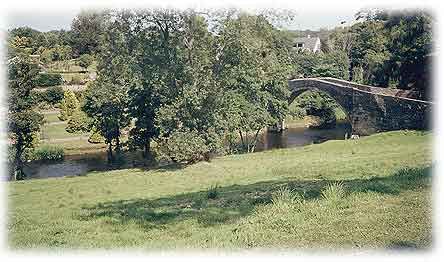
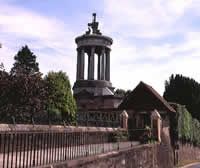




 looking forward to that
looking forward to that 

